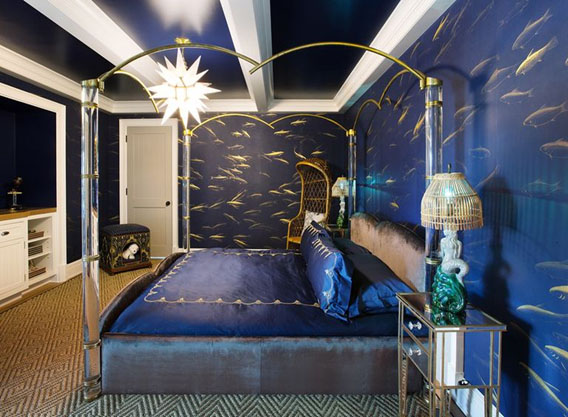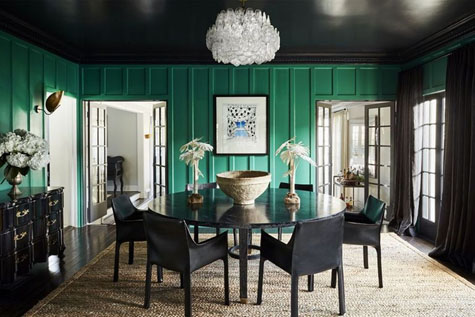For most dwellers, a door is a lot more than an entryway from one room to another. Not only can it give your space a stylish flair, but it can also convey the mood of a room before you even step inside. But while many people dress up their doors with a fresh coat of paint, the type of door you install can make an impact.
However, finding the right door for your home—let alone understanding the small, nuanced difference between each style—can be easier said than done. While most doors can be categorized into flush, paneled, glass, and louvered, each type can be further broken down by pattern as well as how they open and close.
Doors are essential to any space—whether you're building a home from scratch or embarking on a renovation project—and cannot be ignored. To help you find the best option for your aesthetic and environment, we're creating a comprehensive list of door styles. This way, you'll understand the difference between a panel and pocket door—and be able to explain it to others, too.
PANEL DOORS

Also known as a frame-and-panel door, this style is defined as flat panels that fit between a series of stiles (vertical frames) and rails (horizontal frames). While panel doors are available in a number of different designs, the most popular iteration is the six-paneled door, which features six rectangles or squares.
There's a reason paneled doors have been a staple since they rose to design fame in the 18th century. According to the Spruce, a frame-and-panel door's floating construction allows it to expand and contract as the humidity levels fluctuate, preventing the structure from cracking and splitting overtime. Whether your taste skews more classic or contemporary, a paneled door is versatile enough to fit in with any design style.
FLUSH DOORS
At the opposite end of the spectrum are flush doors, which specialize in simplicity. Instead of stiles, rails, and panels, a flush door is often constructed from a single flat slab of wood. Though flush doors are just as versatile as their paneled counterparts, you can expect to see them in newer, more modern spaces.

LOUVERED DOORS
With roots in the middle Ages, the louvered look is one style that can withstand the test of time. Defined as a door with horizontal, angled slats or blades, louvered doors are designed to increase light penetration and airflow. It's no wonder louvered doors are popular in both warmer climates and small spaces such as powder rooms and laundry nooks.
FRENCH DOORS
Why settle for one door when you can have two? Defined as a pair of symmetrical glass-paneled doors that open and close toward each other, French doors can give a room an airy, country-inspired feel. The wall framing will need to be altered in order to physically fit a pair, French doors have plenty of benefits like increasing a room's ventilation and natural light.
That being said, the name can be deceiving. As Hunker points out, the French actually drew inspiration from the symmetrical doors found during the Italian Renaissance.
BI-FOLD DOORS
While most common styles swing open and close on a hinge, there isn't one way to construct a door. Take bi-fold doors, for example. Available in an array of materials like wood and glass, bi-fold doors are made of several panels lined side by side.
Instead of using a standard door hinge, the panels are attached to a tracking system that creates the illusion of the panels folding into each other. Bi-fold doors take up considerably less space since they don't swing open, making them a perfect option for small spaces like closets.
POCKET DOORS
If you want to make the most of your space, consider a pocket door a happy medium between paneled and bi-fold styles. Similar to a bi-fold door, this type glides on a rolling track. However, instead of a series of panels bunching up to the side of the door frame, a pocket door fits inside the adjacent wall. While installing a pocket door can be time-consuming, it's a space-efficient solution for small spaces.
SLIDING DOORS
Consider a set of sliding doors yet another way to make the most of your floor space. This style also operates on wheel-and-track system and is available in plenty of materials. (Think: Wood, louvered, metal, and glass.) But since sliding doors glide from one side to the other, this style has limited accessibility. But whether you want to add a finishing touch to your closet or create an entryway between your home and the great outdoors, this style looks good in just about every home.
SLIDING BARN DOORS
Yes, even something as practical as a door can be trendy. Over the past few years, sliding barn doors have been all the rage because the have the power to give any home modern farmhouse flair. Practical and appealing, this barnyard style runs on an exposed track. Unlike pocket and bi-fold doors, which are perfect for smaller spaces, this style needs to be surrounded by enough empty wall space so it can freely open and close.
But while barn doors are available in several styles, sizes, and colors—and for a reasonable price, no less—this option has a few drawbacks. This door design doesn't block out sound as well as a traditional hinged door.



















Your Message